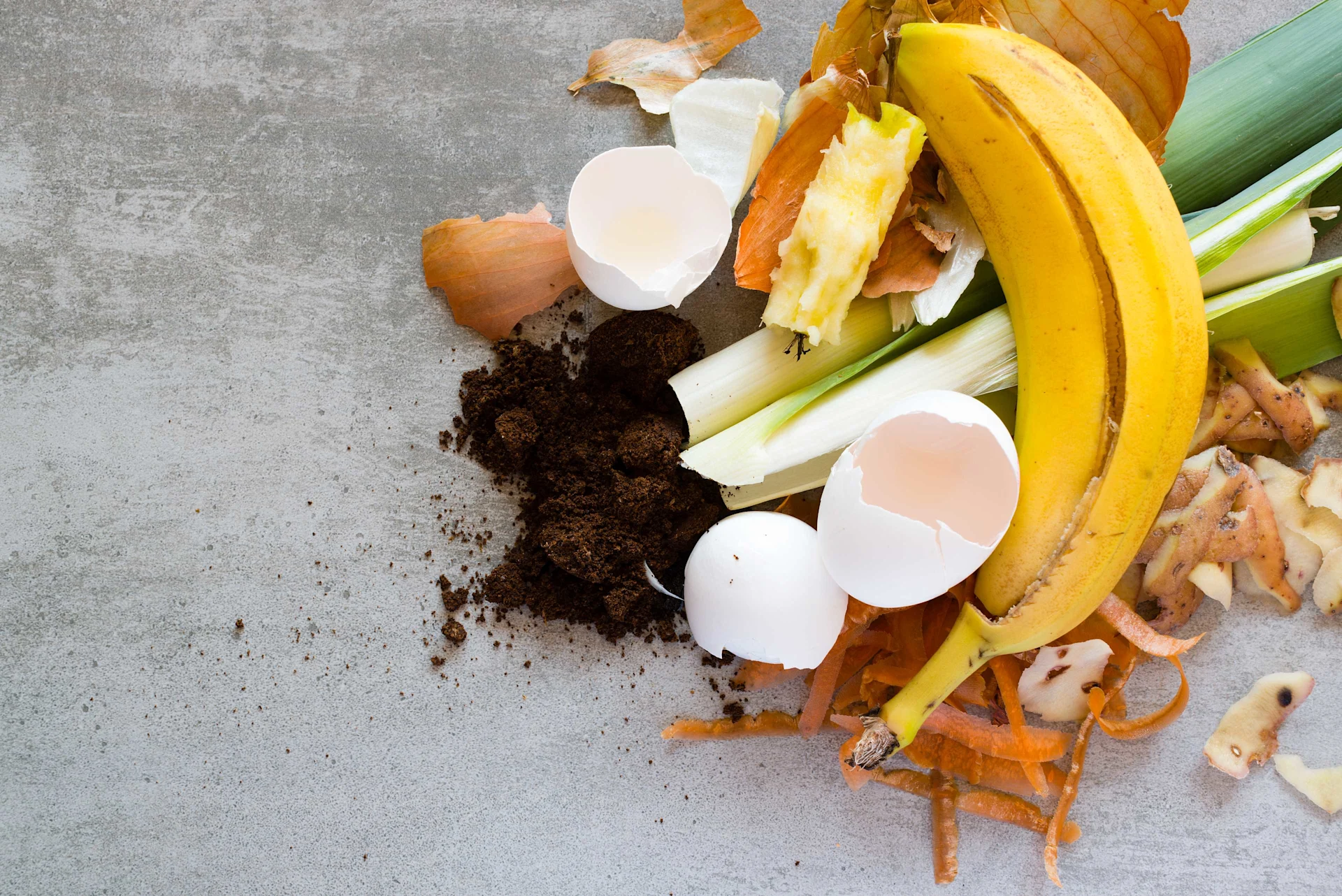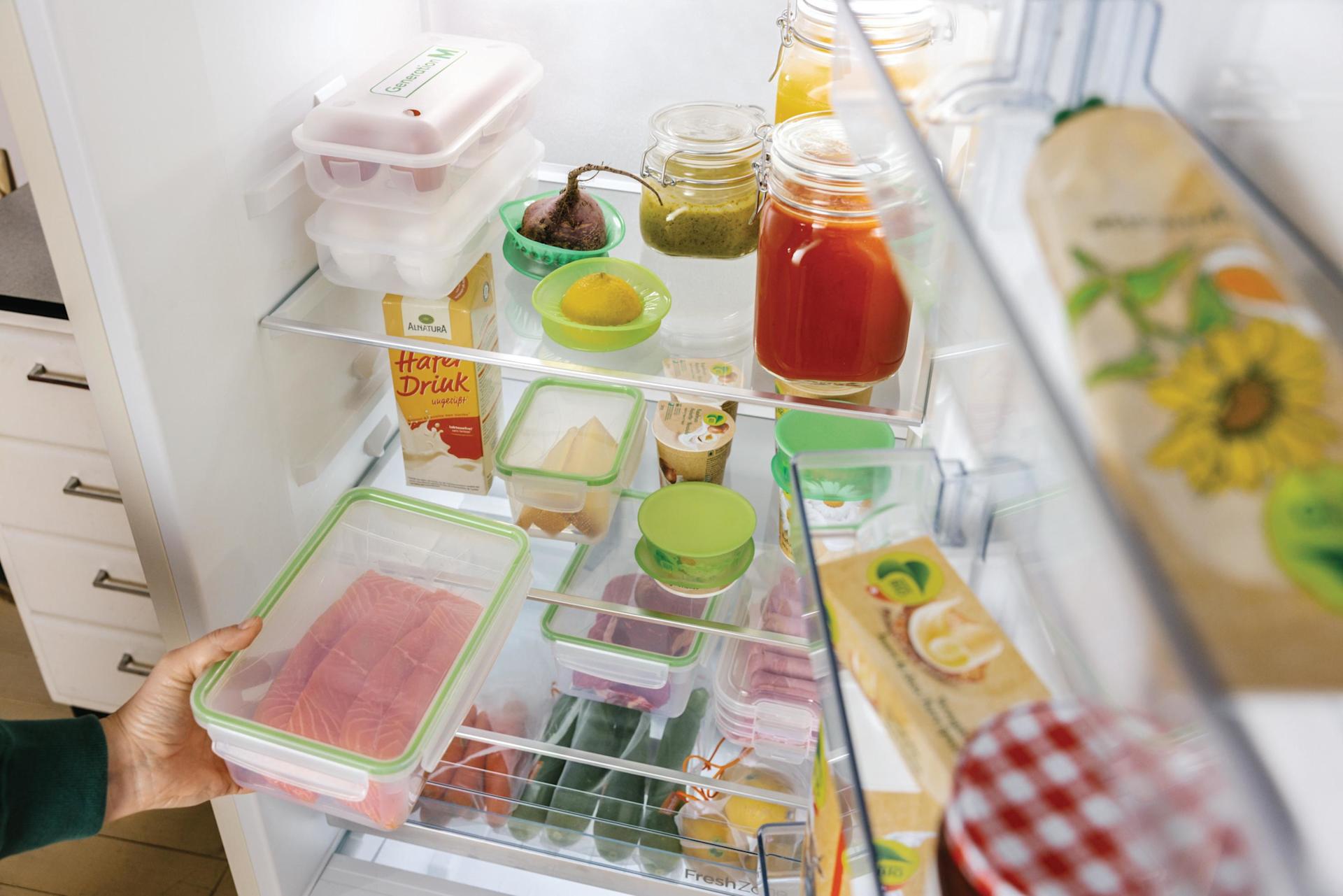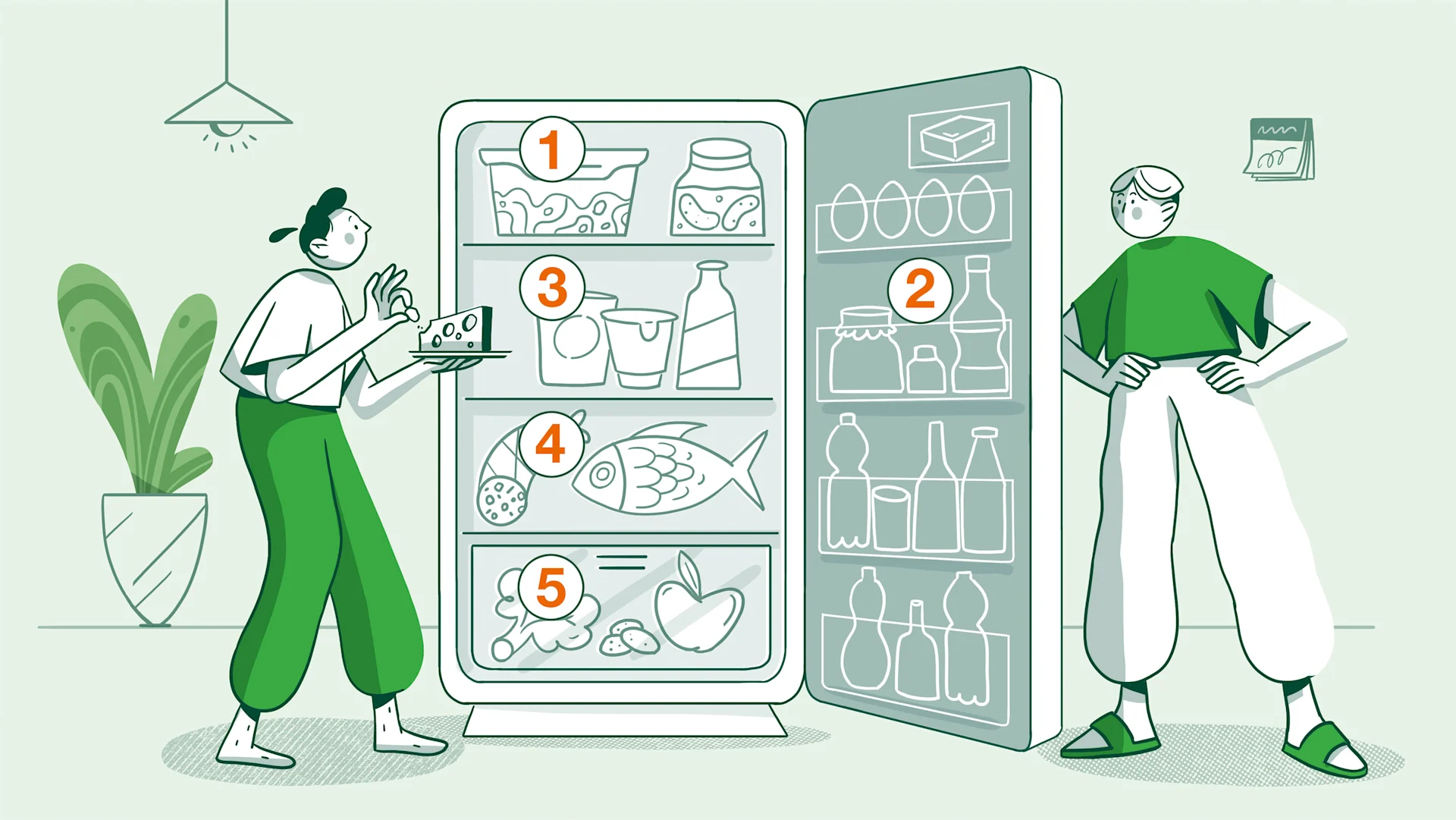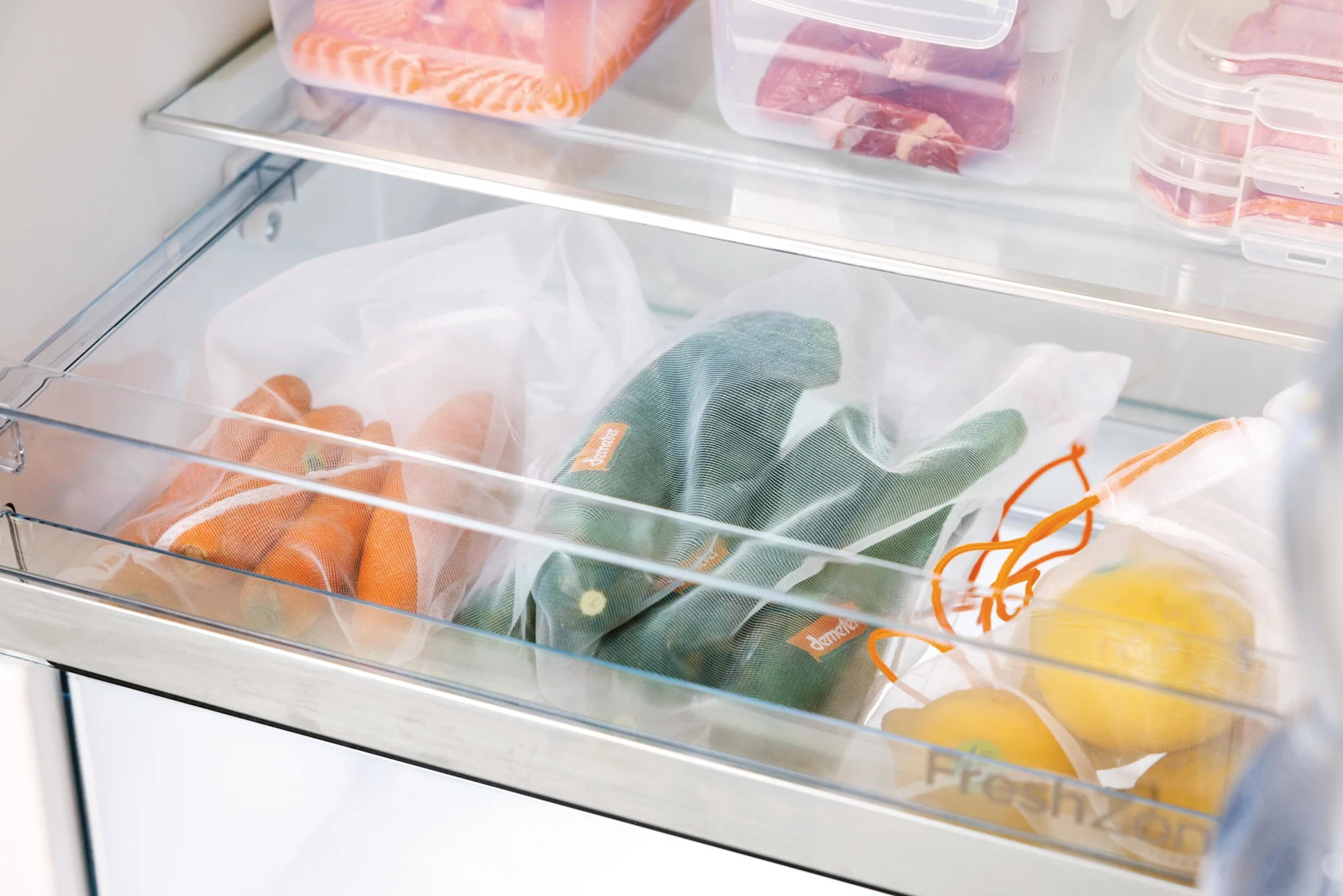
Food waste
What do you know about food waste?
Take part in the food waste quiz and find out how much you already know.
navigation

Food waste
A tidy house, a tidy mind? This also holds true when storing your food. This helps you maintain an overview and avoids wasting food.
A cucumber is frozen to the back wall, the lid on your yoghurt is already bulging and the last weekend's leftovers are stuffed right at the back of the fridge. This is all food waste that can easily be avoided. How? By storing food correctly – and not just in the fridge.
On average, the Swiss each throw away a full meal every day. This waste could be avoided by planning shopping properly, transporting food carefully and storing it in a clever and orderly manner. It would also save a lot of money. What should you remember?
Some foods prefer to be stored cold, others a little warmer. Bread, for example, should be stored in a cool, dry place, where possible in a wooden bread bin or earthenware pot, with the cut surface face down. Covering it with a cotton cloth also prevents it turning dry or soggy.
Potatoes are another food that doesn't belong in the fridge. Instead, it's best to take them out of their plastic packaging and store them in a cloth bag in a different cool, somewhat dark and well ventilated place.
Fresh produce and perishable foods are best kept in the fridge. Many micro-organisms, such as bacteria, mould and yeasts, don't like the cold because it slows down their growth and reproduction. To determine whether food is still good or shouldn't be eaten anymore, it pays to check the best-before date (Migros data) on the packaging.
The use-by date is printed on the packaging of perishable and therefore chilled products. This date specifies by when food should be consumed. After this date has passed - sooner or later depending on the product - the food changes in ways which could be harmful. The use-by date thus serves to protect health.
The best-before date is a recommendation. Optimal quality is guaranteed up until this date. After that time, you can expect its quality to decline. However, from a health perspective, consuming food even past its best-before date is not usually a problem. How long? That depends on the product in question. Unfortunately, if in doubt, you should throw it out. It's therefore all the more important that you don't even get to this stage in the first place. Planning, orderliness and correct storage can help.
Each type of food should have its own assigned place in the fridge. This way, you can keep an overview. It's also important that you don't put newly bought fresher foods in front of older ones. If you do, the older food will quickly be forgotten and spoil. Correct storage doesn't just bring order to your fridge. Food also stays edible and tasty for longer.

Top
Because warm air rises, the temperature at the top of your fridge is about 8-10°C. This makes it the perfect place to store cheese or leftovers – ideally covered or in suitable containers.
Fridge door
This is the warmest place, with temperatures of about 10-15°C. That makes it ideal for storing eggs, butter, sauces, jam and drinks. Use the specially provided racks to store your supplies securely.
Middle
The temperature in the middle section of a fridge is approximately 5°C and thus ideal for milk and dairy products like yoghurts and quark.
Bottom
The area above the vegetable drawer is the coldest, with a temperature of about 2°C. This is where you should store your most delicate foods, such as meat, fish and sausages. It's also a good place to gently defrost food.
Fruit and vegetable drawer
This section has a temperature of about 8°C and is suitable for storing most types of fruit and vegetable. Varieties that are sensitive to low temperatures, such as tomatoes, potatoes and bananas, are best stored outside of the fridge.
Keep butter in a butter dish, as dairy products easily absorb smells from other products.
Sausages and cold meats, fresh meat and fish are best stored in air-tight containers.
Store eggs upside down - this keeps them fresh for longer. Find out more in the article "Do eggs belong in the fridge?"
Leftover tinned products should be stored in a separate sealable container.
Cooked food should be left to cool down completely before being placed in the fridge, also ideally stored in containers.
In general, it's better never to store food open in the fridge.

With simple tips, you too can reduce food waste. Join now and let’s save food together.